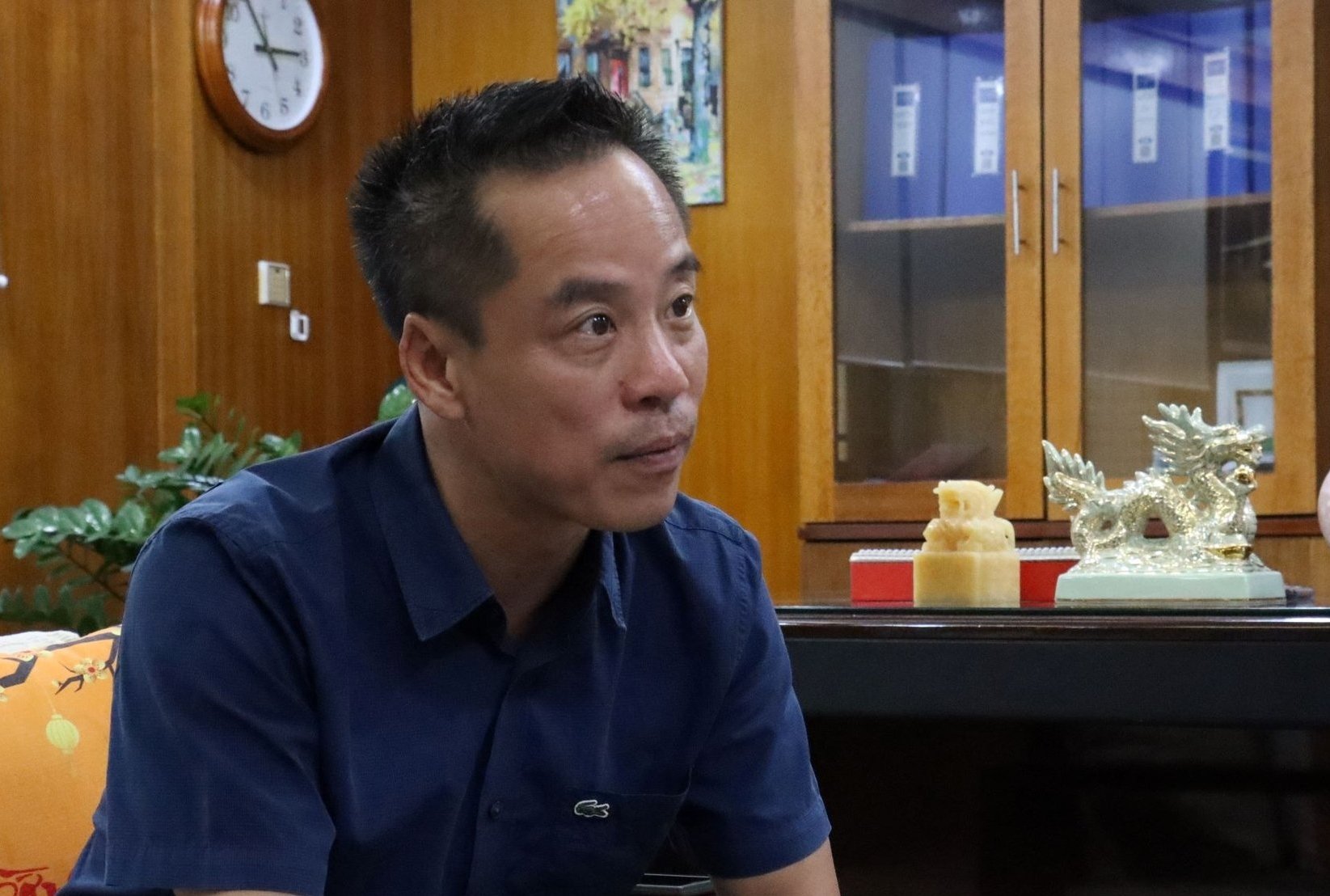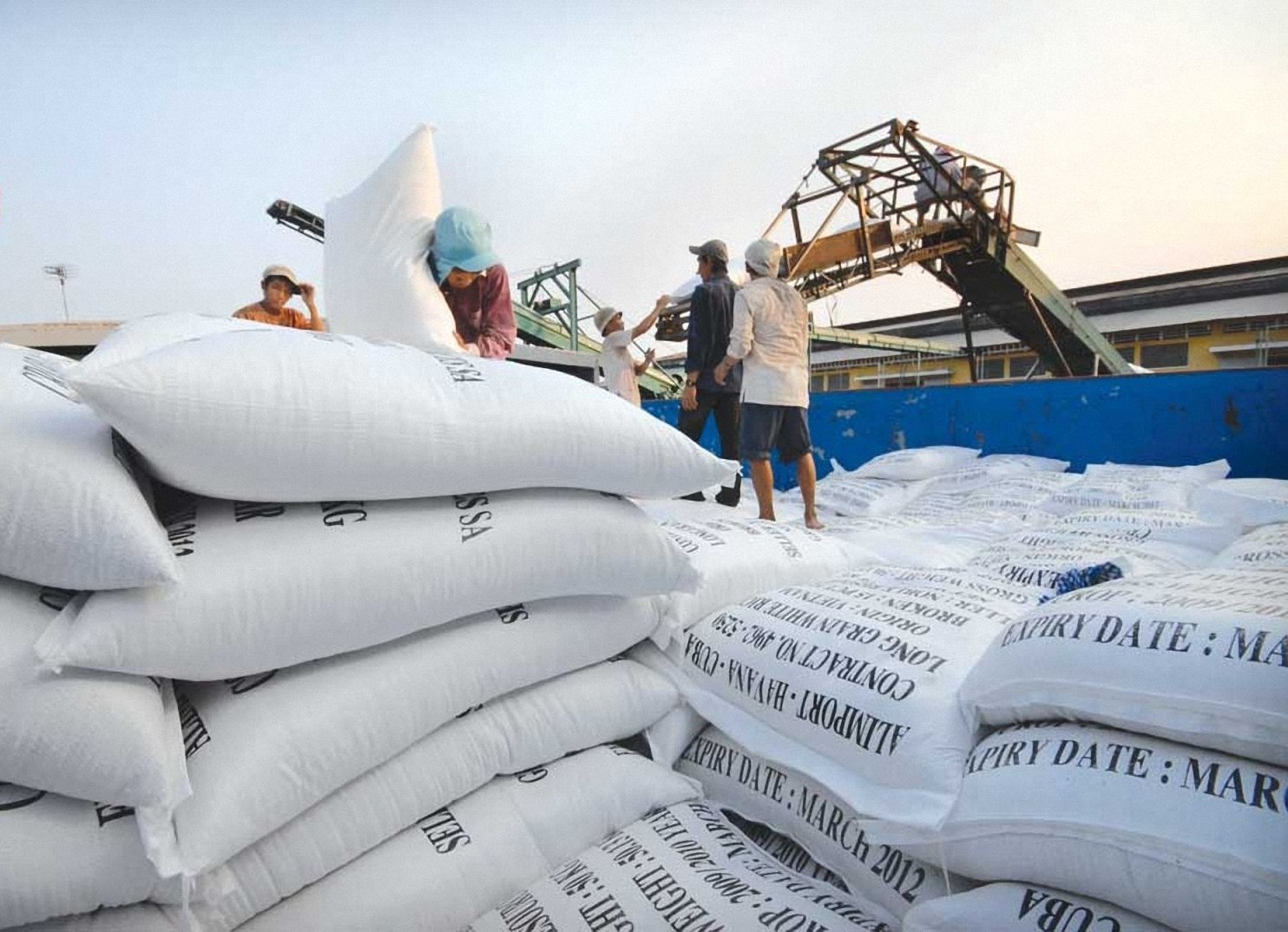November 19, 2025 | 00:09 GMT +7
November 19, 2025 | 00:09 GMT +7
Hotline: 0913.378.918
November 19, 2025 | 00:09 GMT +7
Hotline: 0913.378.918
In early September, news that the Philippines, Vietnam’s largest rice export market, would temporarily suspend rice imports from September 1 to October 30 partially disrupted Vietnam’s rice sales, causing some market fluctuations. This move is believed to be aimed at ensuring food security and stabilizing the domestic market in the Philippines. The sudden change has caused concern among Vietnamese farmers and rice exporters.
Mr. Tran Son Ha, General Director of Vietnam Northern Food Corporation (Vinafood 1), discussed this issue in an interview with the Vietnam Agriculture and Nature Newspaper.

Mr. Tran Son Ha, General Director of Vietnam Northern Food Corporation (Vinafood 1). Photo: Mai Dan.
Sir, the Philippines suddenly suspended rice imports from Vietnam. Do you have any information on the reasons behind this decision?
In fact, this information had been circulating since August. On September 1, the President of the Philippines signed a decree temporarily halting rice imports to protect the domestic harvest. While this decision was somewhat sudden, it is not unprecedented. Businesses agree that this is a short-term measure, not a long-term change.
The Philippines still needs to import around 5 million tons of rice annually. From the beginning of the year until now, they have imported approximately 2.8–3 million tons of rice from Vietnam. Therefore, their decision to temporarily suspend imports can be considered only a temporary measure.
Will the Philippines’ temporary suspension of rice imports significantly affect Vietnam’s rice sales and prices?
In the short term, there is certainly an impact. Some businesses face difficulties as new contracts are delayed, and rice procurement and storage are somewhat affected. Domestic rice prices have already declined, partly due to the slowdown in exports to the Philippines and partly because the summer-autumn crop is nearly finished while the autumn-winter crop is being planted, with harvest expected at the end of October.
However, the impact is not severe. After 30 days, the Philippines may reassess its domestic situation and adjust policies. In any case, their demand for rice remains very high, so the likelihood of imports resuming is strong.

Mr. Tran Son Ha assesses that Vietnam’s rice export outlook remains very positive. Photo: Son Trang.
In your opinion, what measures are needed to ensure stable rice sales and domestic prices?
First, the Government has directed relevant ministries and agencies to advise businesses not to sell at low prices and to maintain stability in the domestic market. The Ministry of Industry and Trade and the Ministry of Agriculture and Environment have issued guidelines and instructed companies to actively purchase rice from farmers while expanding and diversifying export markets.
Vinafood 1 and many other enterprises are also ramping up rice procurement and storage, strictly following Government Decree 107 on rice trading and export. These measures both ensure domestic food security and provide a ready supply for export once markets recover.
In addition, companies are actively expanding exports to African markets, where Vietnamese rice is favored for its quality and reliable delivery. These markets typically have strong import demand toward the end of the year. Efforts are also underway to tap into potential markets in Europe and the U.S., which, although more demanding, help raise the value and brand recognition of Vietnamese rice.
Another important issue is financing. Enterprises have requested that the Government and banks provide preferential credit mechanisms to facilitate rice procurement and storage for farmers. This is a crucial measure to reassure farmers, allowing them to continue production without suffering losses during market fluctuations.

According to Mr. Tran Son Ha, Vietnam’s rice export target for this year remains entirely achievable. Photo: Le Hoang Vu.
How do you assess Vietnam’s rice export prospects this year? Will the Philippines’ temporary suspension of rice imports significantly affect the country’s 2025 export targets?
I remain very confident in a positive outlook. Beyond the Philippines, traditional markets such as China and Africa continue to maintain stable demand. Enterprises are also focusing on sustainable partnerships to produce high-quality rice, reduce emissions, and meet the increasingly stringent requirements of niche markets in Europe and the U.S.
As of now, Vietnam has exported approximately 6.2 million tons of rice. With the upcoming autumn-winter crop in the Mekong Delta, we can fully achieve the target of 7.5–8 million tons this year. The year-end period also sees a strong increase in rice import demand from Africa and the Philippines for holiday consumption, presenting an opportunity for both prices and export volumes of Vietnamese rice to improve.
If no major disruptions occur, by October, when the Philippines’ temporary rice import suspension expires, Philippine businesses are likely to resume imports to meet domestic demand. Meanwhile, Vietnamese enterprises have proactively expanded into other markets to compensate for any shortfall. I am confident that this year’s rice export target remains entirely achievable. While there are short-term challenges, the long-term outlook is very positive.
Thank you very much!
Translated by Phuong Linh

(VAN) Deputy Prime Minister Tran Hong Ha convened a meeting with the MAE and relevant agencies to discuss the draft decree on national multidimensional poverty standards for the 2026 - 2030 period.

(VAN) The year 2025 marks the 10th anniversary since more than 190 countries adopted the Paris Agreement on climate change, paving the way for strengthened global action.

(VAN) The PepsiCo Foundation funded the project ‘New Harvest: Sustainable Agriculture Initiative’, focusing on regenerative agriculture and climate change.

(VAN) Dr. Nguyen Viet Hung, ILRI's Regional Director for Asia, emphasized the One Health approach in ensuring food safety and reducing antimicrobial resistance risks in livestock.

(VAN) The youth-driven initiative ‘Innovate for water, act for the future’ seeks practical, scalable solutions to Vietnam’s water challenges.

(VAN) At the Annual Science Conference of Thuyloi University, Deputy Minister Phung Duc Tien directed researchers to focus on in-depth studies, data harmonization, and solutions linked to real-world practice.

(VAN) After nearly four years of implementation, 5,187 community agricultural extension groups have been established nationwide, with 47,493 members participating.